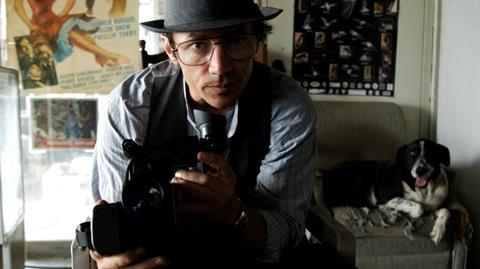Scottish writer/director Diane Bell talks to Jeremy Kay about her first feature Obselidia, which screens in the US dramatic competition at Sundance.

Bell was born in Scotland, grew up in Japan, Australia and Germany, and currently resides in Santa Monica. After getting her masters degree in mental philosophy from Edinburgh University she co-wrote two screenplays with the director Bernard Rudden. She optioned her first solo effort in 2006, a comedy about Mickey Rourke and a Mexican voice-over actor. Obselidia is her first film.
What were your expectations for the film?
We had no expectations whatsoever. It’s magical [to get into Sundance.] You always live in hope that these things can happen. For this film I always thought Sundance would be the best place to debut it. I’ve never been to Sundance before, but I just felt it would be the perfect place for an independent, character-driven movie. The film could get lost in the shuffle in a bigger festival.
Obselidia cost less than $500,000. How did you get the money together?
I had written a horror film for a Scottish producer and I knew he had money to invest. He came up with a percentage of it. Once you have your seed money it’s very useful. I was very adamant to make it for a little money as possible and I wanted to be confident that investors could get their money back. We found another private investor almost by chance. I put an ad on Craigslist for a line producer and I get so many responses and through that I found Ken Morris, this young guy from Texas who really wanted to be involved in some way and he came up with the money.
There’s a nostalgia in the film for the way life used to be. So why did you shoot on digital and not film?
I dreamt of shooting on 16mm but we got hold of a Red camera. We shot tests in the desert and I thought it looked amazing, although we used a lot of old lenses. I didn’t think this film could even have been made five years ago on the budget we shot on. Definitely there’s a harking back to old times in the film, so this is a big irony. A lot of people don’t even know about old films – there a bubble where people are not aware. I wanted to make a film that harked back to older films, in terms of the pacing and rhythm, but at the same time today’s technology is phenomenal and makes it possible to make films for lower budgets and still look good.
The character of Lewis talks about climate change and the end of the world. How grave is the threat?
If it’s even half as urgent as it is right now it’s pretty urgent. I’m not a scientist – all I can do is read what all the different experts say. The scientist that I based the character of Lewis on is called James Lovelock. He came up with the Gaia Theory while he was working for NASA that said the world is a self-regulating organism. They thought he was crazy and now everybody thinks he’s right. He says we’re going to go through a period of extreme weather, then the polar caps will melt and then global warming will really start. What he’s talking about is certainly something that can happen within our children’s lifetime and maybe ours. We really should be listening. Unlike James Lovelock I think there are things we can do; there is window of opportunity. But it’s up to us to take action now.
Is this a good time to be an independent film-maker?
For me it’s an amazing time of opportunity because you can raise a small amount of money and even if you don’t go down the traditional distribution route there are new ones opening up. Right now for artists and film-makers it’s an amazing time because the opportunity to do stuff at a certain level of quality has never been greater.
Publicist: Kim Dixon (kim@dominion3.com), dominion3






















No comments yet